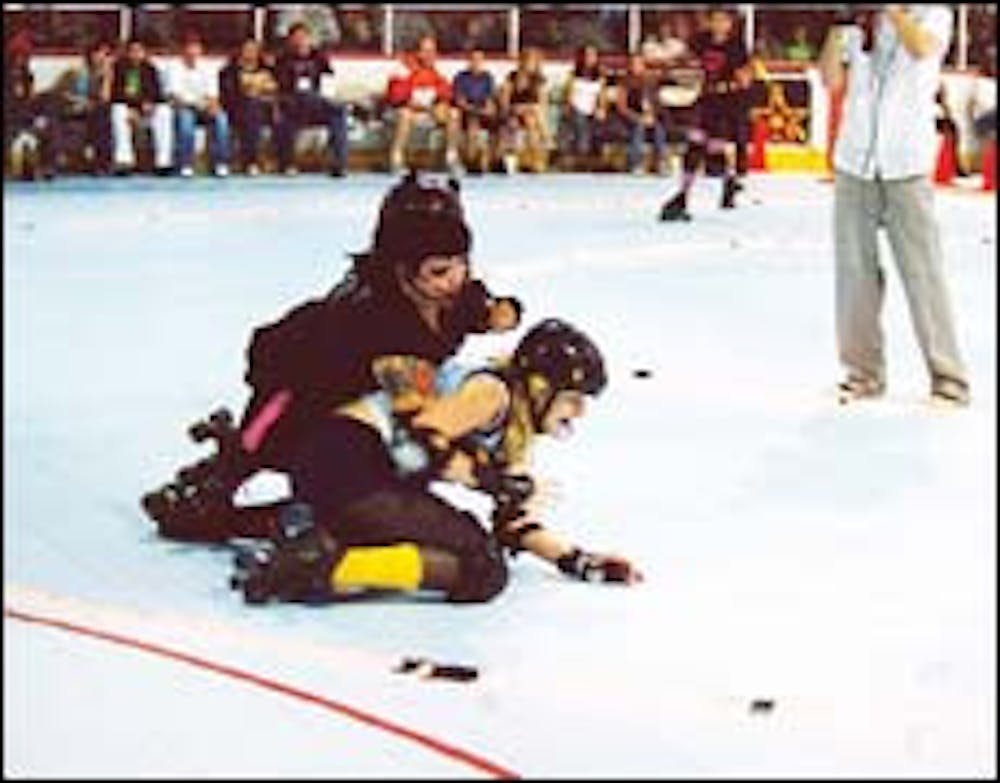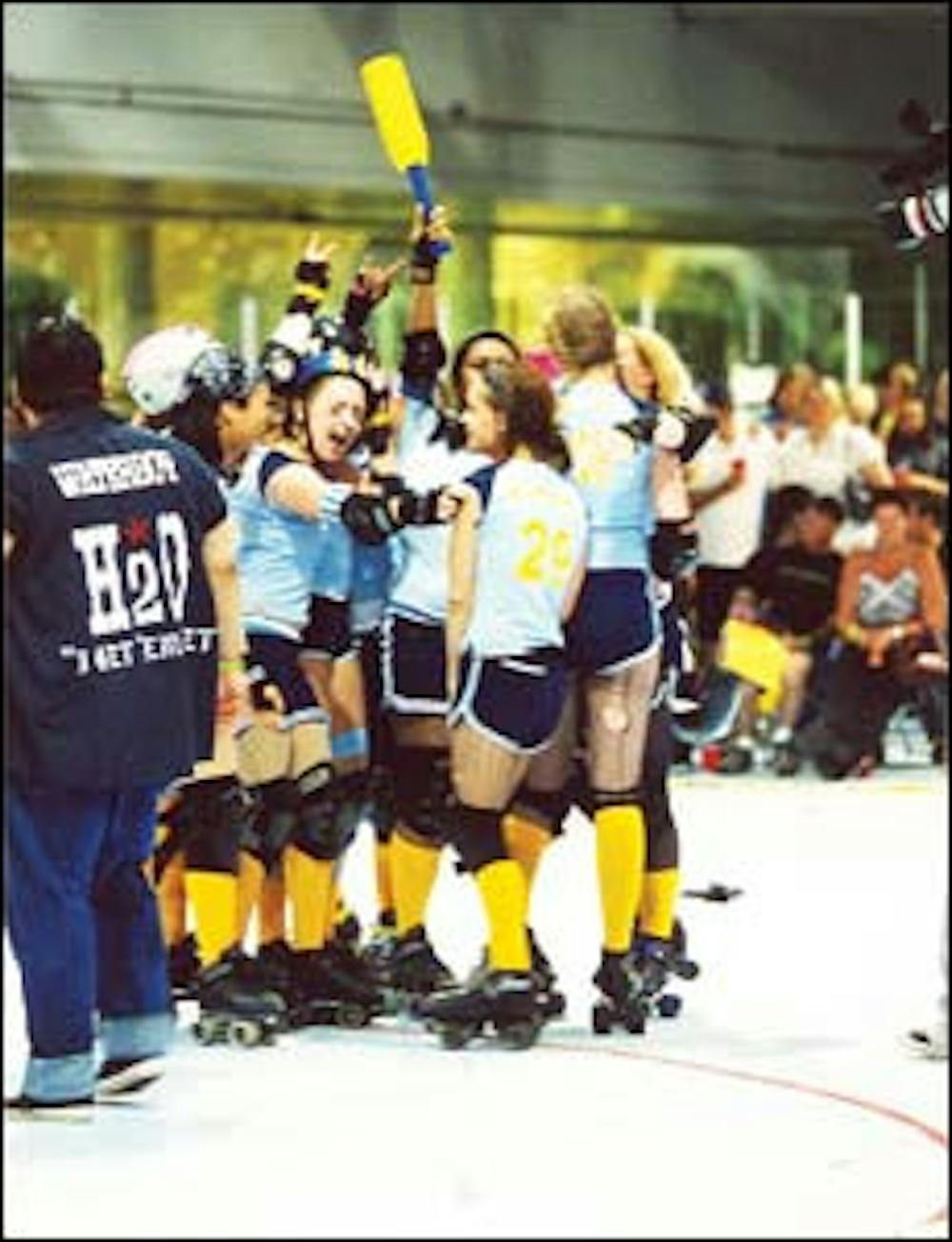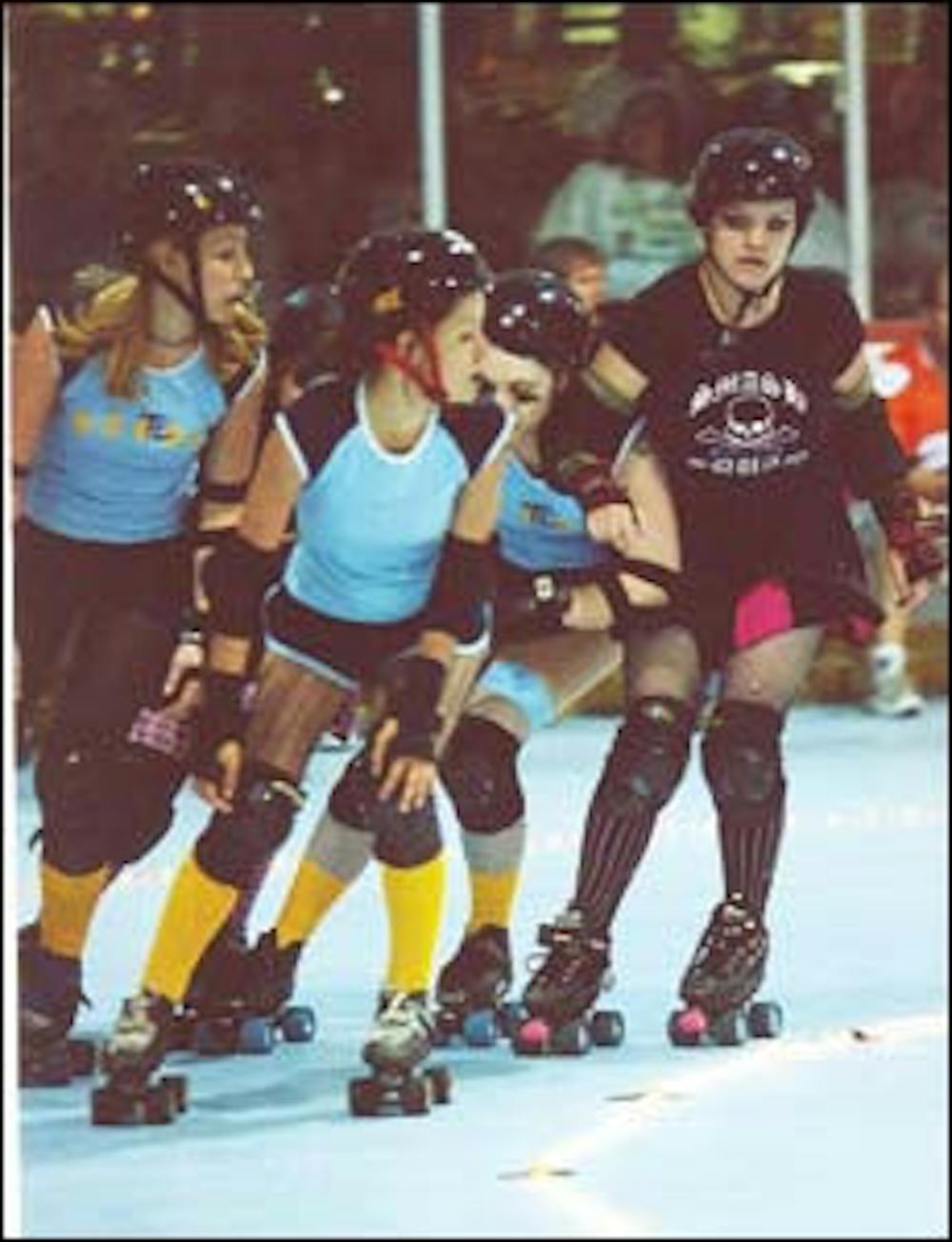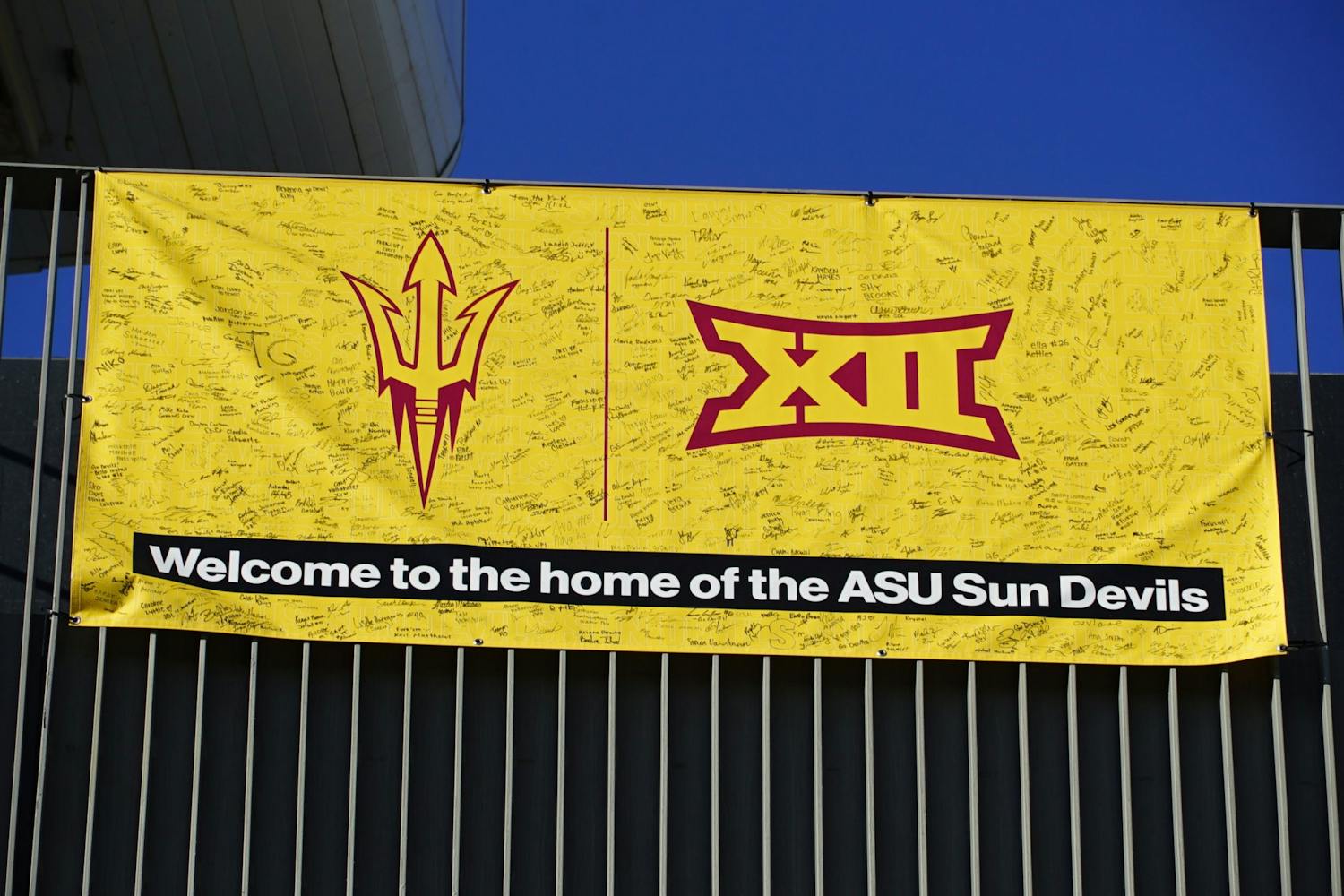They have tattoos, fishnets, short skirts, bruises and mean-sounding names like Helen Wheels and Phyllis Killer.
They look mean.
They act tough.
They're all part of the growing sport of roller derby.
Skating and fighting
The all-female Arizona Roller Derby League was launched in 2003 with just five girls, but it has since matured into a group of about 50 skaters.
"It's been growing at a steady pace," trainer and coach Pauly "The Waterboy" Perez said. "The league has grown from three to five teams in just one year."
Leagues are growing rapidly nationwide. New ones have begun popping up across the country in places such as New York, Los Angeles, Seattle, Phoenix, Tucson, Raleigh, Austin, Las Vegas, Kansas City and the Cayman Islands. There are currently 22 active leagues.
The re-invented roller derby is modeled after the popular derby games of the '50s and '60s. But the new generation of skaters has taken the game into the future with innovations.
The coed teams of the past have been abandoned for a game with all-female competitors. Penalty minutes for fouls committed on the track have been replaced by penalty wheel, which dishes out bizarre punishments when spun. Consequences could include break dancing and singing disco songs. The bouts, or games, feature live halftime entertainment provided by local bands.
The game has even more twists. Each of the five teams in the Arizona league has its own unique theme, complete with matching costumes.
The Surly Girlies wear pirate uniforms. The Bruisers, sport nurse outfits. The Smash Squad is a Punk Rock Cheerleader Team. The Bad News Beaters are a baseball-themed team. And The Tent City Terrors wear black-and-white-striped prison garb complete with pink underwear.
To add to the theatrics, each girl has her own pseudonym, like Brittany Fears, Ivana S. Panking, Babe Ruthless and Rayna Rage.
But while their mean monikers and fierce look may scare their derby foes, beyond the rink, they're middle-school teachers, accountants, waitresses and homemakers.
Lynn French, a roller-derby skater who goes by French Lick, said the women get along with and care for each other.
"We're actually a really nice group of ladies," French said. "Everyone acts all mean and tough but anytime someone gets hurt they all clamber around like 'are you OK honey?' "
Ages of the team members range from 18 to 38. One of the youngest members, 18 year-old ASU student, Nicolette David ("Knock Out Knicko") has been playing on the Smash Squad since October.
"It just seemed like so much fun," David said. "It's skating and fighting."
It's not just the skaters who are varied. The game attracts a diverse group of followers.
"The fan base started with the punk rock and rockabilly crowd, but it has branched out," roller derby player Heidi Gipprich ("Phyllis Killer") said. "At the last bout there were even people in their 70s and 80s."
A crowd of nearly 1,000 people paid $10 per head to attend a June 11 bout at Castles Sports Complex in Phoenix. Two of the five teams battle each other on the rink once a month.
The Bad News Beaters played The Bruisers in a game that went down to the wire with The Bruisers beating the Beaters 110-100.
A contact sport
Roller derby started in the 1930s when a Chicago man, Leo Seltzer, invented a game that put a spin on Depression-era marathon bicycle races. The original roller derby was an endurance contest of male and female couples who had to complete 57,000 laps--the distance from New York to Los Angeles--nonstop on an oval track to win.
In the '50s, the concept of physical contact and a point system were introduced. By the '60s, television gave it widespread popularity as it expanded to virtually every state and several foreign countries.
But by the '70s, Roller Derby fell out of the mainstream and lay relatively dormant until recently.
The rules of the game haven't changed much since Seltzer's time. There are two teams of five players each on the rink for three, 20-minute periods.
Each team consists of one pivot (lead skater), one jammmer (point scoring skater) and three blockers.
The pivot and the blockers form a pack. The pack starts out 20 feet ahead of the jammer and start sprinting at the first whistle blast. The jammer starts out a few seconds later, at the sound of the second whistle. The jammer has to break through the pack and skate another lap before they start scoring points.
On a jammer's second and future trips around, she gets a point for every opponent she passes.
"The blockers have to play offensive and defense at the same time," Perez said. "They have to get their jammer through and keep the other team's jammer out."
This is where the opportunity for violence comes in. Skaters in the pack bump, block and body-check to clear a path for their own jammer, and try to slow down the jammer on the opposing team.
The girls do get hurt.
The most common injuries are bruises, black eyes, scratches, broken tailbones and rink rash, a roller-rink version of road rash, Perez said.
French injured her knee during a bout in which she was shoved off the rink, sending her flying into the audience.
"My knee was killing me," she said, "but I got up and finished the game."
Overcoming challenges
Like most new leagues, they skate on a flat track at a standard-issue rink. These rinks are much easier to find and finance than banked tracks.
While all the girls said that their teammates are supportive and encouraging, not all of their families approve. Gipprich's family has never attended a bout.
"Everyone thinks I am crazy," she said. "They laugh at me when I talk about it."
Despite the lack of support, she said she has no intention of quitting anytime soon.
"It's worth it," Gipprich said, "I can't imagine not doing it [roller derby]."
Reach the reporter at shanna.hogan@asu.edu.






